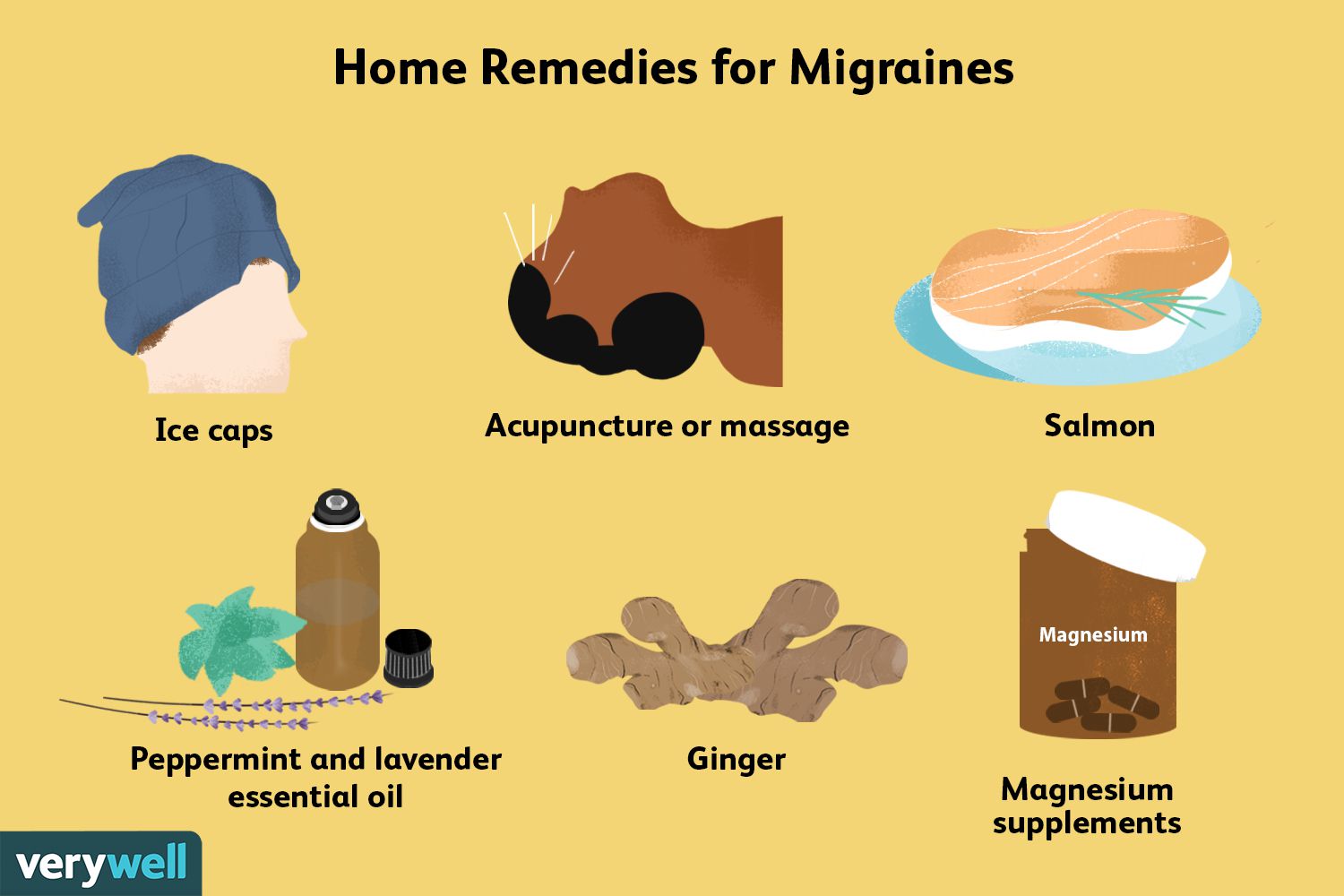If you’ve ever experienced the debilitating pain of a migraine, you know just how important it is to find relief. Migraines can be incredibly disruptive, making it difficult to carry out daily activities and enjoy life to the fullest. Luckily, there are pain relief options available that can help alleviate the symptoms and provide much-needed comfort. In this article, we’ll explore some of the most effective strategies for managing migraines and finding relief from the throbbing pain that accompanies them.
When it comes to migraines, finding the right pain relief option is crucial. From over-the-counter medications to lifestyle changes and alternative therapies, there are various approaches you can take to alleviate the pain and reduce the frequency of migraines. In this article, we’ll delve into these options and provide insights into how they work, their effectiveness, and any potential side effects. So, if you’re tired of suffering from migraines and are eager to find relief, keep reading to discover the pain relief options that could make a world of difference in your life.
Are there Pain Relief Options for Migraines?
Migraines can be debilitating, causing severe pain, sensitivity to light and sound, and even nausea. For those who suffer from migraines, finding effective pain relief options is crucial. Fortunately, there are several treatments available that can help alleviate the symptoms and provide much-needed relief. In this article, we will explore some of the most common and effective pain relief options for migraines.
Over-the-Counter Medications
One of the first lines of defense against migraine pain is over-the-counter medications. Nonsteroidal anti-inflammatory drugs (NSAIDs) such as ibuprofen and naproxen sodium can help reduce inflammation and relieve pain. These medications are easily accessible and can be effective in managing mild to moderate migraines. It is important to follow the recommended dosage and consult with a healthcare professional if you have any underlying medical conditions or are taking other medications.
In addition to NSAIDs, there are also over-the-counter migraine-specific medications available. These medications often contain a combination of pain relievers, caffeine, and anti-nausea medication. They are designed to target the specific symptoms of migraines and provide relief. However, it is important to use these medications as directed and not exceed the recommended dosage.
Prescription Medications
For individuals with more severe or frequent migraines, prescription medications may be necessary. Triptans are a class of medications commonly prescribed for migraines. They work by constricting the blood vessels in the brain and blocking pain signals. Triptans are available in various forms, including tablets, nasal sprays, and injections. It is important to note that triptans are not suitable for everyone and should be used under the guidance of a healthcare professional.
Another class of prescription medications used for migraines is called ergotamines. These medications also work by constricting blood vessels and can be effective in relieving migraine pain. However, they are not recommended for individuals with certain medical conditions, such as high blood pressure or heart disease. As with any prescription medication, it is important to discuss your medical history and any potential side effects with your healthcare provider.
In some cases, preventive medications may be prescribed for individuals who experience frequent migraines. These medications are taken regularly to reduce the frequency and severity of migraines. Preventive medications can include beta blockers, antidepressants, anticonvulsants, and Botox injections. It is important to work closely with your healthcare provider to find the right medication and dosage for your specific needs.
Alternative Therapies
In addition to medication, there are several alternative therapies that may provide relief for migraines. These therapies focus on holistic approaches and can be used in combination with other treatments. Some alternative therapies that have shown promise for migraine relief include:
– Acupuncture: This traditional Chinese therapy involves the insertion of thin needles into specific points on the body. It is believed to help balance the flow of energy and promote healing.
– Massage: Massage therapy can help relax tense muscles and improve blood flow, which may help reduce the frequency and intensity of migraines.
– Biofeedback: This technique involves learning to control certain bodily functions, such as heart rate and muscle tension, through the use of electronic devices. Biofeedback has been shown to be effective in reducing the frequency and intensity of migraines.
– Herbal supplements: Certain herbs, such as feverfew and butterbur, have been used for centuries to treat migraines. However, it is important to consult with a healthcare professional before taking any herbal supplements, as they may interact with other medications or have side effects.
Lifestyle Changes
Making certain lifestyle changes can also help manage migraines and reduce their frequency. Some lifestyle changes that may be beneficial include:
– Identifying triggers: Keeping a migraine diary can help identify triggers, such as certain foods, stress, or hormonal changes. Avoiding these triggers can help prevent migraines.
– Getting regular exercise: Engaging in regular physical activity can help reduce the frequency and intensity of migraines. It is important to choose exercises that are low-impact and not likely to trigger migraines.
– Practicing stress management techniques: Stress is a common trigger for migraines. Learning stress management techniques, such as deep breathing exercises, meditation, or yoga, can help reduce the frequency of migraines.
– Establishing a regular sleep schedule: Lack of sleep or changes in sleep patterns can trigger migraines. It is important to establish a regular sleep schedule and practice good sleep hygiene.
In conclusion, there are several pain relief options available for migraines. From over-the-counter medications to prescription drugs, alternative therapies, and lifestyle changes, there are various approaches to managing and alleviating migraine pain. It is important to work closely with a healthcare professional to find the best treatment plan for your specific needs. Remember, what works for one person may not work for another, so it may take some trial and error to find the most effective pain relief options for migraines.
Key Takeaways: Are there pain relief options for migraines?
- 1. Over-the-counter pain relievers such as ibuprofen or acetaminophen can help alleviate migraine pain.
- 2. Prescription medications like triptans are specifically designed for migraine relief.
- 3. Non-drug approaches like relaxation techniques, ice packs, and avoiding triggers may provide relief.
- 4. Certain lifestyle changes, such as getting enough sleep and managing stress, can also reduce the frequency and severity of migraines.
- 5. If migraines are frequent or severe, consulting a healthcare professional is recommended to explore other treatment options.
Frequently Asked Questions
What are some common pain relief options for migraines?
Migraines can be debilitating, but there are several pain relief options available to help manage the symptoms. One common option is over-the-counter pain relievers, such as ibuprofen or aspirin. These medications can help reduce the severity of the migraine and provide temporary relief.
In addition to over-the-counter medications, prescription medications are often prescribed for migraines. Triptans are a class of drugs specifically designed to treat migraines by constricting blood vessels and blocking pain pathways in the brain. Your doctor may also recommend preventive medications to reduce the frequency or severity of migraines.
Are there any non-medication pain relief options for migraines?
Yes, there are non-medication pain relief options that can be effective for managing migraines. One popular method is applying cold or hot compresses to the head or neck. Cold compresses can help numb the area and reduce inflammation, while hot compresses can help relax tense muscles.
Another non-medication option is practicing relaxation techniques, such as deep breathing exercises or meditation. These techniques can help alleviate stress and tension, which are common triggers for migraines. Additionally, some people find relief through alternative therapies like acupuncture or massage.
Can lifestyle changes help with migraine pain relief?
Yes, making certain lifestyle changes can help with migraine pain relief. One important aspect is identifying and avoiding triggers that may be contributing to your migraines. Common triggers include stress, certain foods, lack of sleep, and hormonal changes.
Regular exercise can also be beneficial in managing migraines. Exercise releases endorphins, which are natural painkillers, and can help reduce the frequency and severity of migraines. It’s important to maintain a consistent sleep schedule and prioritize getting enough rest, as lack of sleep can trigger migraines for some individuals.
Are there any natural remedies for migraine pain relief?
While scientific evidence for natural remedies is limited, some people find relief from migraines through certain natural remedies. One popular option is taking magnesium supplements, as low levels of magnesium have been associated with migraines. However, it’s important to consult with a healthcare professional before starting any new supplements.
Other natural remedies that may provide relief include ginger, which has anti-inflammatory properties, and feverfew, an herb that has been traditionally used for migraines. It’s important to note that natural remedies may not work for everyone and should be used in conjunction with other pain relief options.
When should I seek medical help for migraines?
While many migraines can be managed with over-the-counter medications and lifestyle changes, there are certain situations where medical help should be sought. If your migraines are becoming more frequent or severe, if they are accompanied by neurological symptoms such as confusion or difficulty speaking, or if they are interfering with your daily life, it’s important to consult with a healthcare professional.
A healthcare provider can assess your symptoms, provide a proper diagnosis, and recommend appropriate treatment options. They may also refer you to a specialist, such as a neurologist, who can provide further guidance and support for managing migraines.
What is the best treatment for a migraine?
Final Summary: Relief is Possible – Exploring Pain Relief Options for Migraines
Living with migraines can be debilitating, but the good news is that there are various pain relief options available to help alleviate the symptoms and improve your quality of life. From over-the-counter medications to lifestyle changes and alternative therapies, finding the right combination of treatments can provide much-needed relief.
One of the most common options for migraine pain relief is over-the-counter painkillers such as ibuprofen or acetaminophen. These medications can help reduce inflammation and relieve the intensity of the headache. However, it’s important to follow the recommended dosage and consult with a healthcare professional if you have any underlying conditions or concerns.
In addition to medication, lifestyle changes can also play a significant role in managing migraines. This may include identifying and avoiding triggers such as certain foods, stress, or lack of sleep. Regular exercise, maintaining a consistent sleep schedule, and practicing relaxation techniques like yoga or meditation can also help reduce the frequency and severity of migraines.
Alternative therapies such as acupuncture, biofeedback, or herbal supplements have also shown promise in providing relief for some migraine sufferers. While the effectiveness may vary for each individual, exploring these options with the guidance of a healthcare professional can open up new avenues for pain management.
In conclusion, there is no one-size-fits-all approach to migraine pain relief, but by exploring different options and working closely with healthcare professionals, you can find a combination of treatments that work best for you. Remember, it’s essential to prioritize self-care, make necessary lifestyle adjustments, and seek professional guidance to effectively manage migraines and reclaim control over your life. Don’t let migraines hold you back; relief is possible!




